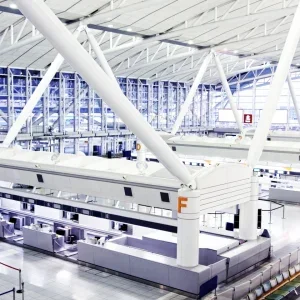Haptic Architects and Nordic Office of Architecture have unveiled plans for a sustainable ‘smart city’ next to Norway’s primary transport hub, Oslo Airport Gardermoen (OSL), Flytoget Airport Express, E6, E16 and Jessheim city.
The new city will be entirely powered by self-produced energy and served by driverless electric vehicles (EVs), reports World Construction Network.
The four million square metre city is expected to take 30 years to build and is being developed by Norwegian development vehicle Oslo Airport City (OAC).
The objective is for the city to be ‘energy positive’ with the capacity to sell surplus energy to surrounding buildings, communities and cities and for activities such as the de-icing of airplanes.
According to the plans, green technology will be used to reduce carbon emissions. Driverless cars, auto-lighting for the streets and buildings, and smart-tech waste and security management will be used in the car-free city, where citizens will never be more than five minutes away from public transport.
The sustainable city will be centred around a public park and include sports and outdoor leisure activities, as well as a large indoor swimming pool. A cycling route is also planned around a lake.
The city will include green spaces for Oslo Airport’s workforce, which is expected to increase from 22,000 to 40,000 by 2050. OAC will also provide homes for long-term residents and short-stay visitors.
Construction on the first stage of the city is expected to begin in 2019 and the first buildings are expected to be completed by 2022.
The Norwegian government, which is undertaking a shift away from oil to green energy, is supporting the OAC scheme.
Oslo Airport expects to operate its own EV fleet by 2025.
The Nordic Office of Architecture had designed the original airport in the 1990s. It completed the curving extension in 2017, doubling the airport’s size and expanding its capacity to 35 million passengers a year.




